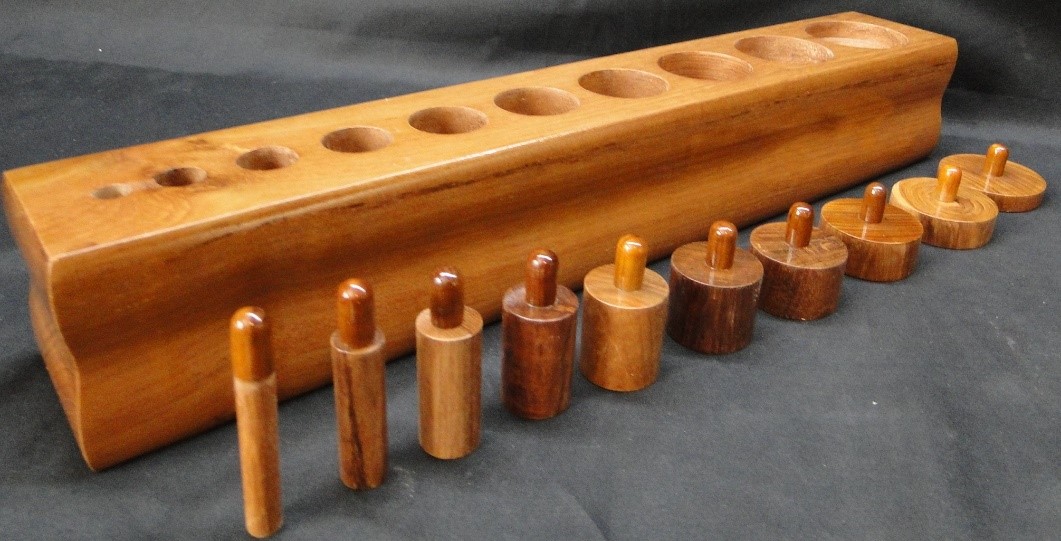Tom and Karen Brenner, the authors of the new book on dementia—THE MONTESSORI METHOD FOR CONNECTING TO PEOPLE WITH DEMENTIA, open up about how they have implemented the Montessori method when working with clients with dementia, and how favorable this method has proven to be. They also provide recommendations to caregivers.
We sometimes say that if we fell off the face of the earth tomorrow there are a couple of things we’ve accomplished that would make our lives memorable: our children have grown up to be kind and caring people who are making real and lasting contributions to the larger world. Another accomplishment that means a great deal to us is that we’ve helped to change the conversation around dementia. We haven’t done this on our own, of course. Many people working in the dementia field have contributed to a more positive approach to this work. From the moment we started volunteering at a long-term care home over twenty years ago, we’ve often been surprised and inspired by the people living with dementia and their caregivers.
When we first began this work, it seemed that almost every article written, nearly every book published described dementia as “the walking dead” or “the long goodbye” or “a disease that robs people of their person-hood.” The thinking about dementia was grim. Of course, dementia is a tough diagnosis for the person who has it and the people who love and care for that person. We understand that caring for someone with dementia is exhausting, frustrating, maddening, lonely and heartbreaking. But, over the years, working with people who live with dementia and their caregivers we’ve also learned that this condition can have moments of joy and laughter and deep connection.
We believe that it is our mission to create opportunities for these moments of connection and joy. Using the Montessori Method as our program for positive dementia care, we’ve seen with our own eyes that we can reach and connect to people who have dementia. Dr. Maria Montessori, the first woman in Italy to become a physician used her medical training to observe children in an asylum in Rome to create her revolutionary method of education. She was a pioneer in creating prepared environments; spaces that served the needs of the people using it. For example, Dr. Montessori was one of the first to use child sized furniture. She invented the jungle gym and built educational materials that allowed children to explore these Montessori manipulatives on their own. These learning tools were built of natural materials, were made to be beautiful with a control of error and isolation of difficulty built in to the work. The children were then free to use the materials repetitively so that they learned through their procedural or muscle memory.
Dr. Montessori also encouraged the use of positive language when working with the children. Instead of saying, “Don’t run!” Montessori teachers are taught to say, “Please walk.” This seems like such a simple change to make but it is quite challenging to turn all our negative speech into positive statements. Maria Montessori believed passionately that children should be allowed to explore a specially prepared learning environment so that they could become independent, life-long learners.

When we began applying the Montessori Method to our work in dementia care, we started to find so many parallels between a Montessori program for children and one for older adults. In a well run person centered dementia care program, the environment should fit the needs of the people using it: the areas should be free of clutter for ease of movement, the furniture should be comfortable with easy egress, there are beautiful plants and a pet or two in the environment with paintings hung at wheelchair eye level. The carpeting and walls need to have little or no design and there should be as much natural light as possible.
The Montessori materials and exercises that we use in our program call on the use of the procedural or muscle memory system. This memory system tends to be less affected by dementia. Someone may work with a Montessori material in the morning and have real success with it. In the afternoon, they may not remember that they worked with this material in the morning, but if the work is placed in their hands, they will remember how to do it! We’ve observed this phenomenon many times. Using the Montessori manipulatives gives people the opportunity to practice skills that are vital for maintaining or re-learning activities of daily living. The Montessori knobbed cylinders, for example, allows the person to use the pincer movement over and over. This movement is important for holding cutlery for eating or zipping a jacket or buttoning a shirt.

We also encourage caregivers to try and use more positive language, understanding that this is not an easy goal to accomplish. For example, instead of saying, “Mom, of course you remember her! She’s been your best friend for fifty years!” we encourage people to say something like, “Mom, say hi to Mary. She likes to crochet too!” Trying to use positive language recognizes that we are meeting people where they are in that moment. It is respectful of the person and of the difficulties with which they are dealing.
One of the most important ideas we share with caregivers is giving people with dementia something meaningful to hold in their hands. It is very difficult for elders with dementia to begin a conversation out of thin air or be present with us without some sort of grounding. When we give people something meaningful to hold this simple act helps them focus and centers them in the moment. This object can be something from nature: an autumn leaf, a cup of snow, a flower. Or it could be something that was very meaningful in that individual’s life. Someone may have been a plumber but that doesn’t mean he necessarily wants to hold a wrench or pipes again. His true passion may have been for baseball. We would give him a baseball mitt or a pennant from his favorite team to hold. We have found that this simple act of giving people something meaningful to hold in their hands can lead to wonderful conversations, laughter, connection.
In our second book on positive dementia care, The Montessori Method for Connecting to People with Dementia, we discuss our application of the Montessori Method and we also demonstrate how using the arts can be a very effective way to reach and connect to people with dementia. Each chapter is devoted to a particular art form; painting, singing, drum circles, writing stories from life, creating poetry, video diaries. People who have never played a drum in their lives or picked up a paint brush find that they can express themselves through these mediums and love doing so! There is a real, visible bond that develops when a group of people with dementia play together in a drum circle or read aloud a story that one of the group has written or sings in a choir together. Our new book chronicles many of the people we’ve worked with who have opened up and connected to their caregivers and the larger world through the arts in our Montessori program.
We want to share one more very important aspect of this Montessori memory support work and that is the importance of the story. Everyone has a great story inside of them. We listen to the stories that people living with dementia tell us and then we turn them into stories to share in our Elder Reading Circles. We also take these stories out into the wider world to remind others that people living with dementia still have wisdom and laughter and life lessons to share with all of us.
Seeing a dairy farmer paint his first picture or a woman who has lost the ability to speak sing out loudly in a choir, these are the moments we cherish. This is what bring us so much joy in the work we do. We share these stories to give encouragement and hope to professional and family caregivers. We understand what difficult and all-consuming work you are doing. In our book, The Montessori Method for Connecting to People with Dementia we share the techniques and tools we have used to find engagement and joy with people who have dementia. We wrote this book to share practical, fun and useful ideas. It is our fervent prayer that in the pages of this book you will also find comfort, affirmation and hope.
“To be truly radical is to make hope possible, rather than despair inevitable.”
-Raymond Williams
For more information on THE MONTESSORI METHOD FOR CONNECTING TO PEOPLE WITH DEMENTIA, please click here


